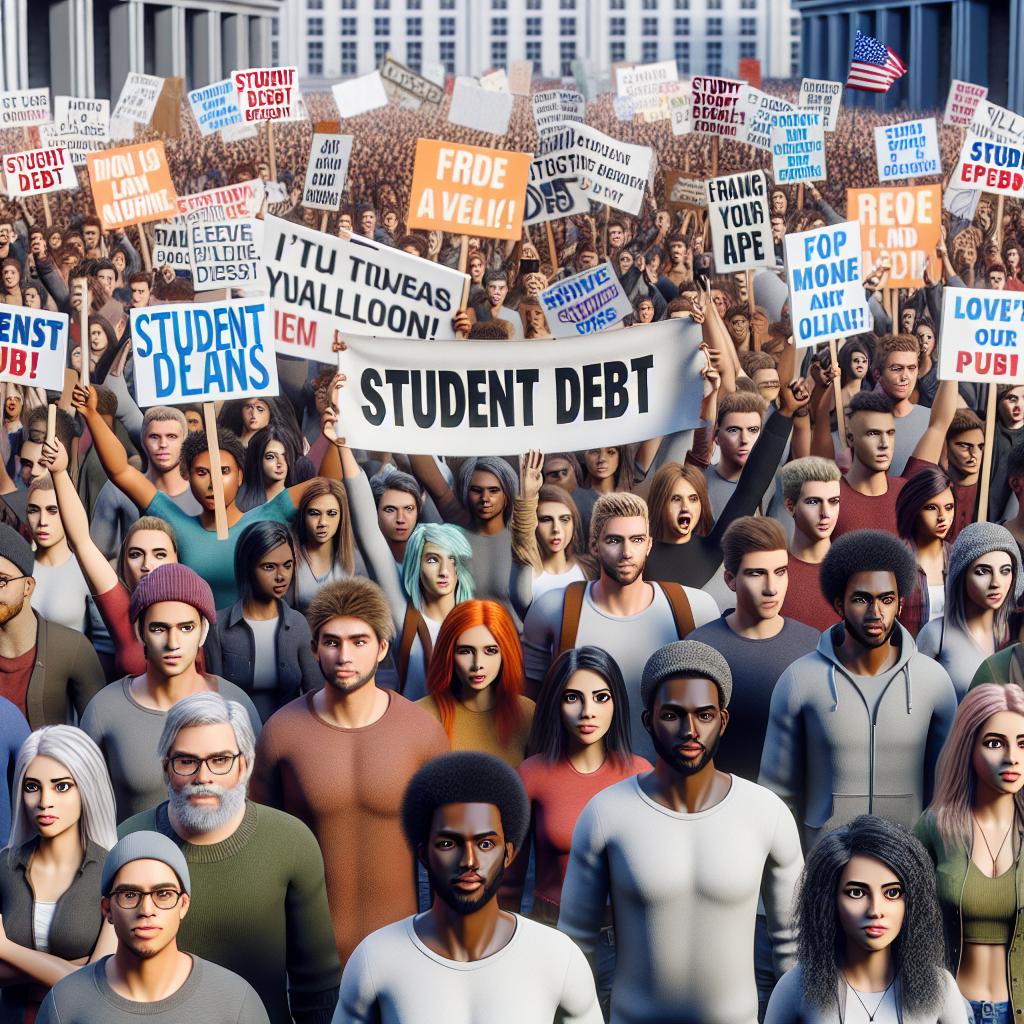

Student loan protest rally.
In the latest development on the educational front, the planned student loan cancellation faces further legal challenges. Previously, two federal judges issued preliminary orders barring implementation of key elements of President Biden’s Saving on a Valuable Education (SAVE) scheme. The program had aimed to significantly reduce loan repayments for students, however, this has increasingly been seen as a significant burdern on taxpayers.
The SAVE plan, finalised last year, was the most generous income-driven repayment (IDR) plan offered by the federal government to date. Under this new plan, the payments for undergraduate borrowers were set at just 5% of their income above 225% of the federal poverty line, a considerable reduction from the previous requirement of 10% of income above 150% of the poverty line. Alongside this, student borrowers were also offered interest forgiveness on a month-to-month basis and total forgiveness of outstanding balances after a duration of 10 to 25 years.
While these adjustments sound beneficial for the borrowers, they were estimated to increase the taxpayers’ burden by nearly $475 billion. As some parts of the SAVE plan were implemented earlier than initially planned, the Biden administration has come under heavy criticism. Some preliminary benefits such as the higher income exemption and monthly interest forgiveness were rolled out in advance, only exacerbating the moments of contention for the plan evem further.
The preliminary injunctions against parts of the plan came from two separate lawsuits filed by different groups of states. These rulings, varying in their reasoning and effects, may necessitate further intervention from a superior court to provide a final judgement.
In a suit raised by Alaska and a few other states, one stipulation prevented the parts of the SAVE plan that were planned for implementation on July 1, but did not touch on the elements that had already been put in place. The crux of the issue centered around whether the Higher Education Act (HEA) permitted the Department of Education to establish such a generous IDR scheme.
Contrarily, Judge John Ross, in response to a lawsuit led by Missouri, argued that while the HEA permits the Secretary of Education to design IDR plans, it does not authorize loan forgiveness under the IDR. This opinion could potentially have massive implications and considerations for the future of the SAVE plan and the thousands of students it aimed to aid.
While the future of the SAVE plan is still murky, it is clear that these legal developments could create significant hurdles for the Biden Administration’s education plan. With current circumstances dictating a block on debt forgiveness and a reduction in monthly payments, the implications are far-reaching for students struggling with educational debt.
Interestingly, parts of the SAVE plan that have already been implemented will remain in effect. Future decisions from superior courts will be crucial in formulating the final narrative around the plan. Amid legislative and legal confusion, the much-needed clarity and resolution for student borrowers seem to rest in the hands of lawmakers and how they respond to these developments.
How to Effectively Design a Roof for Optimal Airflow and Ventilation The design of a…
News Summary On February 24, 2025, Fort Mill, SC, was rocked by a tragic shooting…
News Summary Columbia, South Carolina faced severe weather on Sunday morning, with tornado and thunderstorm…
News Summary A South Carolina jury awarded $700 million to the family of Brittanee Drexel,…
News Summary Professionals in Charleston are invited to the 'Business & Brews' networking event at…
News Summary Wilmington, North Carolina, has emerged as the fastest-growing metro area in the state,…